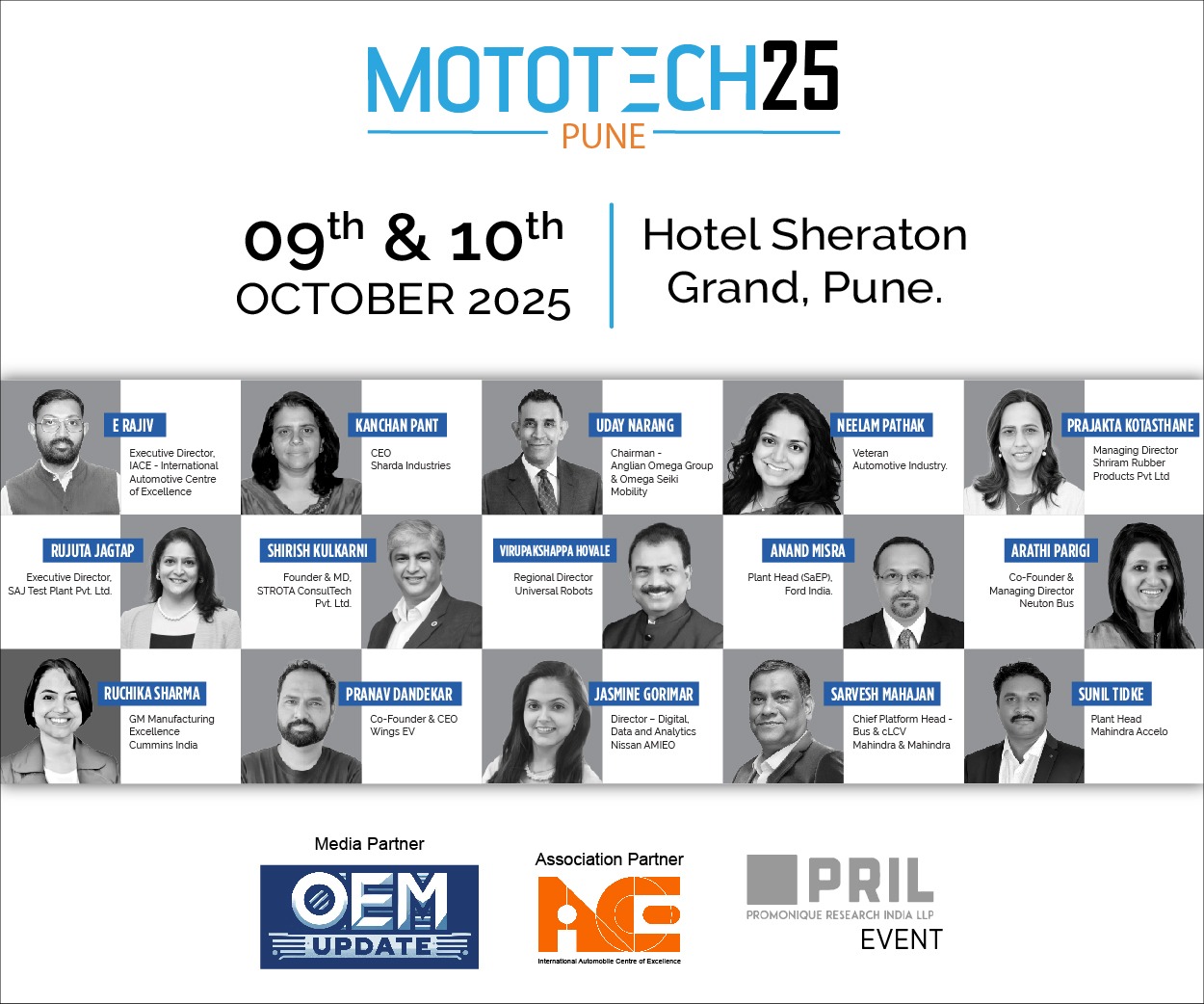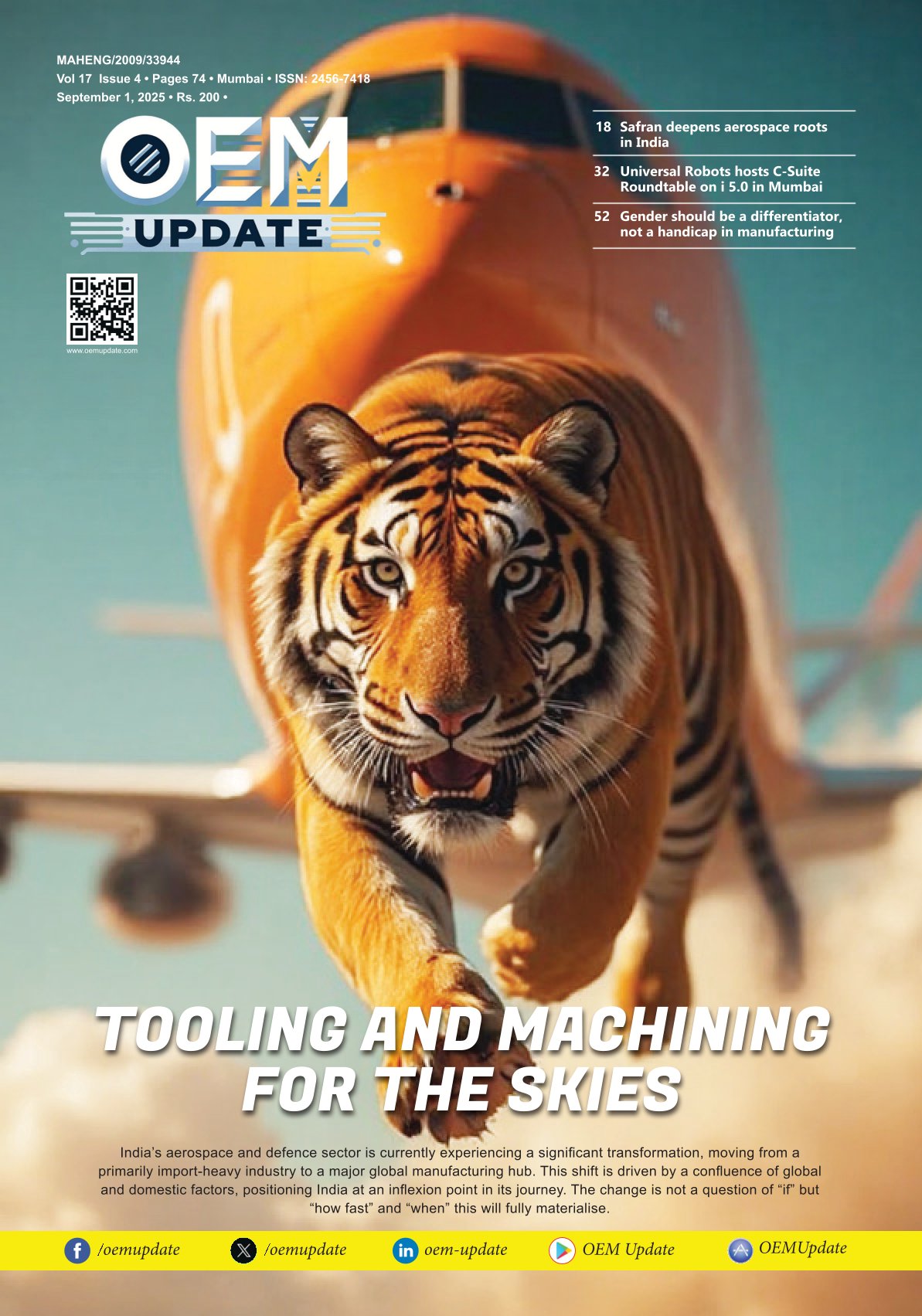Gearbox technology propelling industrial efficiency and reliability
By OEM Update Editorial May 9, 2024 7:27 pm IST
Expressing views based on their experience in the gear industry in various capacities as a consortium of authors, Mahendran Muthu, Cdr. M S Srikant (Retd), and A Selvaraj explore how recent gear and motor technology innovations have changed the paradigm in industrial machinery, robotics, and automotive sectors, optimising performance, reducing friction, and improving the durability of diverse applications.
What role do gears play in motor-driven systems, especially when fixed speeds are standard?
Gears do not enhance efficiency, but they vastly improve the range of applications for AC motors, which operate at fixed speeds by design. Employing a Variable Frequency Drive (VFD) to adopt speed comes at the cost of electrical efficiency. Consequently, connected gears serve as crucial elements that can alter the drive torque and its associated speed, including changes in the direction and line of transmission, as seen in configurations like in-line, Z drives, L drives, and others.
What are the advantages of intelligent manual transmission over automated transmission?
The word intelligent is used when an algorithm is used, and gear selection is based on the algorithm. Manual transmission permits the most optimal exploitation, while automatic transmission depends on the algorithm used. Automated systems eliminate the need for human intervention, rendering them less dependent on individual skills for regular application. For endeavours demanding high levels of skills, such as motor racing, the preferred choice is manual transmission despite the availability of automated options.
How are integrated intelligent gear and motor systems optimising production processes and improving predictive maintenance capabilities in manufacturing plants?
Using an algorithm removes a person’s dependency and the associated skill sets. The optimisation is achieved through this automation. Automation relies heavily on collecting relevant and required data captured through sensors. For instance, the appropriate gear selection in an automobile is based on the torque dependent. It gets sensed as the wheel torque demand and the throttle opening by the driver based on road and traffic conditions. These data points and other data picked up can also serve as indicators of system health, facilitating predictive maintenance. For example, in an industrial setting, an impending bearing failure can be identified by monitoring increases in torque demand and associated temperature, prompting maintenance intervention. In addition, assessing noise and vibration signatures and comparing them to baseline data from testing is a sure precursor to the operating health of the system.
How do gear and motor technology advancements impact the design and efficiency of industrial machinery and robotics?
Gear technology advancements have ushered in compact gears capable of delivering the same power output while significantly reducing noise levels, both in structure-borne and airborne aspects, resulting in quieter operations. Modern gears’ efficiency is nearing 99 percent, and there has been a substantial increase in reliability due to advancements in design, manufacturing methods, and processes. Gears and gearboxes have now evolved into “fit and forget” components, engineered for their designed lifespan with minimal maintenance requirements, except for attending to consumables.
The overall equipment efficiency has seen significant enhancement due to various factors. It includes advancements in optimising gear geometry, utilising the best gear materials, and improving heat treatment processes through intelligent and automated controls. Refining hob cutter tools, aided by CAD and CAM solutions, ensures precise gear profiles. Improvement in gear grinding processes contributes to maintaining high-quality gear profiles. Conclusively, online Coordinate Measuring Machines (CMM) allows for real-time verification and measurement of gear profile quality.
How can the challenges in designing compact gearboxes for diverse applications be effectively addressed due to power density, weight, and noise reduction?
Addressing the challenges in designing compact gearboxes for diverse applications involves several key factors. The power density is crucial, representing the ratio of transmitted power to the gearbox’s weight and space. Smooth operation is another critical aspect. Noise and vibration reduction techniques, encompassing several crucial elements, need to be considered in this context. These include optimised gear designs integrating compact load sharing, topology, and micro-geometry enhancements through advanced software.
Achieving optimal gear geometry to minimise transmission errors is essential, as is selecting materials, such as alloyed steels, with precise heat treatment for construction. Additionally, designing a forced lubrication system prevents issues like scuffing and premature bearing wear while maintaining suitable gear element temperatures to control overall thermal growth.
Another factor drawing attention is the design of associated elements like shafts, couplings, and bearings to ensure maximum efficiency. The ‘Design for Manufacture’ (DFM) involves using appropriate manufacturing methods and machines that deliver the requisite accuracy in gear profile quality, geometric dimensioning, and tolerancing (GD&T).
Design for Assembly (DFA) considers assembly sequencing and fitments, accounting for factors like thermal expansions, load deflections, and lubrication adequacy to ensure compactness and performance excellence in gearbox design.
Lastly, the design addresses routine maintenance needs and potential breakdowns. A gearbox is a fit-and-forget equipment. Routine maintenance like inspections, changes of oil, and oil seals known as consumables is a function of time and exploitation hours breakdown due to maloperation or some unknown effects also needs to be looked into, and adequate provision during the design phase needs to be created. This aspect is known as design for maintenance.
Thus, these eight design elements form a holistic approach and clearly distinguish between a design Gearbox and a world-class gearbox, known as ARM (Availability, Reliability, and maintainability).
What are the benefits and challenges of gearless transmission than traditional gear-based systems?
Gearless transmission is a different paradigm. While comparing various transmissions like chain and sprocket systems and belts to geared systems, the advancements in motor technology, especially in speed control, have brought in a different facet altogether. However, the limitation is torque variation and torque converters could address this issue, which comes with a high cost in both initial design and manufacturing, especially when space and weight are at a premium, in addition to considering life cycle costs. In simpler terms, a fully automatic transmission in automobiles with torque converters is expensive both upfront and in ongoing operation. The authors opine that geared transmissions will remain a necessary mechanical device for at least another decade until a new disruptive technology emerges.
How do engineers address friction, wear, and heat generation in gears and motors to enhance their durability?
Today, we have low-friction technology alongside other developments, such as mag-levitated bearings. Progress in lubrication oils reduces wear by reducing friction and ensuring stability under high temperatures while efficiently transferring heat to maintain optimal temperatures. Further, windage losses are mitigated through enhanced designs facilitated by CAD-based Computational Fluid Dynamics (CFD) analysis. Similar advancements are also observed in motor technology.
Cookie Consent
We use cookies to personalize your experience. By continuing to visit this website you agree to our Terms & Conditions, Privacy Policy and Cookie Policy.
















